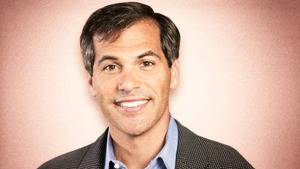Gemellology is the term for the scientific study of twins (“Facts & Stats”). These multiples possess a very special and unique bond. Most twins hold more than simply good friendship, rather, they begin to bond as life-long companions beginning before they are even introduced to the world. In most cases, identical twins share a stronger bond than that of fraternal twins, primarily due to the fact that they share the same genes (“Facts & Stats”). Obviously, twins are very similar simply by sight, but it is unimaginable the extent to which twins are identical in their thought patterns, pathological, psychological, and physical aspects.
Many identical twins experience the same thought patterns because of their shared genes (“Facts & Stats”). Ron and Roger Scarbrough scored so similarly on a test that their teacher failed them, convinced they were cheating (Jackson 26). Given another chance, they again made the same errors. When joining the air force, they had to take a test, and mysteriously answered the same questions wrong. When retested, they again made the same one error (Jackson 26).
Janie and Linda N. are identical twin sisters (Bowles-Reyer). Their thought patterns were proven to be very similar when they both sent their parents the same exact present thousands of miles apart from each other (Bowles-Reyer). Twins reared apart at birth and later brought back together reveal further proof of the similar thought patterns of identical twins. As this being the basis of Dr. Thomas J. Bouchard’s studies at the University of Minnesota, he has met twins who both store rubber bands on their wrists, sneeze in public for attention, and pairs who walk into the ocean backward (Jackson 35).
Identical twin brothers, Jim Lewis and Jim Springer, were reared apart when they were just weeks old (Wright 43). Both men thought their brother had died at birth, but thirty-nine years later, they were reunited (Jackson 35). Dr. Bouchard studied them and was shocked to find many more similarities in their thought patterns than expected (Bowles-Reyer). It was discovered that both brothers married twice: first to a woman named Linda and the second time to a woman named Betty, named their sons James Alan and James Allen, had a dog named Toy as a child, took family vacations to the same location without ever meeting, and both worked part-time as a sheriff’s deputy in Ohio (Segal 118). The “Jim twins” were just one of the many interesting sets of twins studied by Dr. Bouchard (Mystery of Twins).
Sharon Poset and Debbie Mehlman, identical twins reared apart as infants, were reunited at age forty-five (Jackson 36). Dr. Bouchard discovered that they both had one child, yellow colonial-style houses, had a husband born in December, set their watches five minutes ahead to avoid being late, wore sunglasses in the shade, and shared strong religious beliefs (Jackson 34).
The mysterious similarities in the thought patterns of identical twins are truly mind-boggling, especially the similarities of twins reared apart at birth, considering they have never lived together. Besides similar thoughts, many twins experience a unique pathological bond.
Pathologically, twins share a bond unlike any other. Many twins experience ESP and the ability to share one another’s consciousness (Bowles-Reyer). This is known as the nonlocal or universal mind. A physicist named J.S. Bell developed Bell’s Theorem, a hypothesis explaining nonlocal mind. It said that when two subatomic particles come into contact with each other and are then separated, a change in one particle could cause a similar change in the other, instantly and to the same degree. In the 1960’s, to test this hypothesis, researchers pointed a light at one twin’s eye and found that the other twin’s brain-wave pattern changed in response. Besides tests, many people’s personal experiences have helped to prove Bell’s Theorem.
A woman named Linda N. gave birth to two babies in her life (Bowles-Reyer). The first time, she was two thousand miles apart from her identical twin sister, Janie, and the second time, Linda was in Naples, Italy while Janie was in Oregon. Both times, Janie went into labor pains with her sister. Similarly, when Linda was in the navy, she had to have multiple surgeries that Janie had to be medicated for. Linda stated, “If I notify her in advance she can control or manage the pain”(Bowles-Reyer).
In Yosemite, Maureen C. came close to drowning, and soon after, received a letter from her identical twin sister in Japan asking her if something had happened to her (Bowles-Reyer ). Besides this incident, in 1978, Maureen’s sister was killed in a car accident, and from one-and-a-half hours away, Maureen reported feeling dizzy at the same time her sister had had the accident and had to lay on the floor to keep herself from falling. Maureen was no doubt feeling everything her sister was feeling. Just as Maureen C. was submitted to experiencing her own sister’s death, Raymond Brandt also had to undergo this pain (Mystery of Twins).
Raymond Brandt was working on top of a pole with conductors that were not energized, but he suddenly felt a jolt of electricity run through his body (Mystery of Twins). This occurred at the same time that his identical twin brother, Robert, was electrocuted just five miles away (Mystery of Twins).
There is a chilling truth behind the nonlocal mind that raises many eyebrows and generates numerous questions, but it is truly fascinating if looked at from the perspective of J.S. Bell and his theorem. While the nonlocal mind is an amazing bond between identical twins, for people like Raymond Brandt and Maureen C., it becomes an entrapment in their own nightmares, both having had to experience the loss of their own twin and best friend.
The psychological bond of twins can be recognized in the way twins grieve for their lost co-twin. Dr. Nancy Segal, the director of the Twins studies Center has been studying twinless twins for more than fifteen years (Jackson 37). She has learned from other’s personal accounts how heartbreaking and dramatically life-changing it is when one twin dies, leaving the other behind (Segal 176). She noted that twins grieve more for the loss of their co-twin than for a parent, sibling, relative, or even their own child, because they were not only best friends who bonded from the day of conception, who only understood each other, but are also left with constant reminders, such as birthdays. “The lonesome crowd can be especially lonely because most twins have never felt alone. Perhaps it is this unique feature of twinship that distinguishes its loss so dramatically from other losses”(Segal 186). Raymond Brandt still continues to cope with his brother’s death that occured over fifty years ago (Jackson 37). He stated, “When Robert died so abruptly, I had to make my first decision on my own. I couldn’t share my deepest fears about going on without him”(Jackson 38). “Twins are always thinking ‘we’ rather than ‘me'”(Jackson 38). There is so much truth in this statement by Robert Brandt. Most twins grow up together sharing their deepest secrets, confident their trust will not be failed, so when a twin is left to live alone, it is as if they are all alone in the world with no one to turn to. It is a traumatic and devastating change that leaves them having to learn how to survive all over again.
Crystal Shaw lost her twin sister, Lynsey, in a car accident at age eleven and continues to suffer painful anguish and sorrow over her loss (Jackson 37). At first, Crystal found it difficult to sleep at night because she had slept in the same room as Lynsey her whole life. Starting high school alone was especially hard, coming home sick the first three days (Jackson 38). Although Crystal will cope with Lynsey’s death for rest of her life, she is learning to adjust to her “new” life by talking to others who are also experiencing the same pain (Jackson 38).
To live as a twinless twin is a very difficult adjustment to cope with, and just as Raymond Brandt put it, “Such emotional connection, especially between identical twins makes it difficult for single-birth persons to identify with their loss”(Mystery of Twins). Support groups can help ease the pain, but the pain is always there, along with the endless memories and reminders.
Some twins also share a rare physical bond. There have been incidences in which identical twins have gotten hurt just hours or days apart, or have died on the same day (Scheinfeld 228). Megan and Caitlin Coleman broke the same bone in their arms less than a week apart from each other (Mercer). More amazingly, two twin sisters died at a mental hospital just moments apart from each other while in separate rooms (Scheinfeld 228). Eng and Chang Bunker, the original “Siamese” twins, connected only by a thick band of flesh at the base of their chest, died a mere three hours apart (Mystery of Twins). There has even been one case in which both twins of a pair took their lives at about the same time (Scheinfeld 230)!
The physical bond of twins is inconceivable. No one will ever be sure whether these particular cases were due to the mysterious bond of twins or if they were simply coincidences.
Twin is an ancient German word meaning “two-together” (Facts & Stats), which not only defines twin in the literal sense, but more importantly, captures the true essence of being a twin. It signifies “two-together” living as life-long companions sharing secrets and laughing about things only they can understand. Twins share a profound bond, mysterious and intriguing to others, but which is a way of life for twins, themselves. This bond is so strong that no outside influence can break it (Bowles-Reyer). Even for those twins who have lost their co-twin, this bond cannot be destroyed, because it does not physically exist on the outside, rather it exists only in one’s heart. In the words of Raymond Brandt, “Once born a twin, always a twin”(Jackson 38).
References:
Bowles-Reyer, Amy . TLC. Ed. Kristen Lomasney. 2000. Discovery Channel. 9 Feb. 2002.
“Facts & Stats.” Comp. Penny Dottavio. Ed. Sharon Withers. Twins Magazine. 9 Feb. 2002.
Jackson, Donna M. Twin Tales: The Magic and Mystery of Multiple Birth. Boston: Little, Brown and Company, 2001. 1-48.
Mercer, Anastasia . “Twins suffer same breaks in life .” The La Crosse Tribune 1997. 9 Feb.
Mystery of Twins. Dir. Patrick Fleming. Videocassette. Unapix Home Entertainment, 1996.
Scheinfeld, Amram . Twins and Supertwins. Philadelphia : J.B. Lippincott Company, 1967. 11-292.
Segal, Nancy L. Entwined Lives: Twins and What They Tell Us About Human Behavior. New York: Penguin Putnam Inc., 1999. 1-396.
Wright, Lawrence . Twins and What They Tell Us About Who We Are. New York: John Wiley & Sons, Inc., 1997. 1-202.


